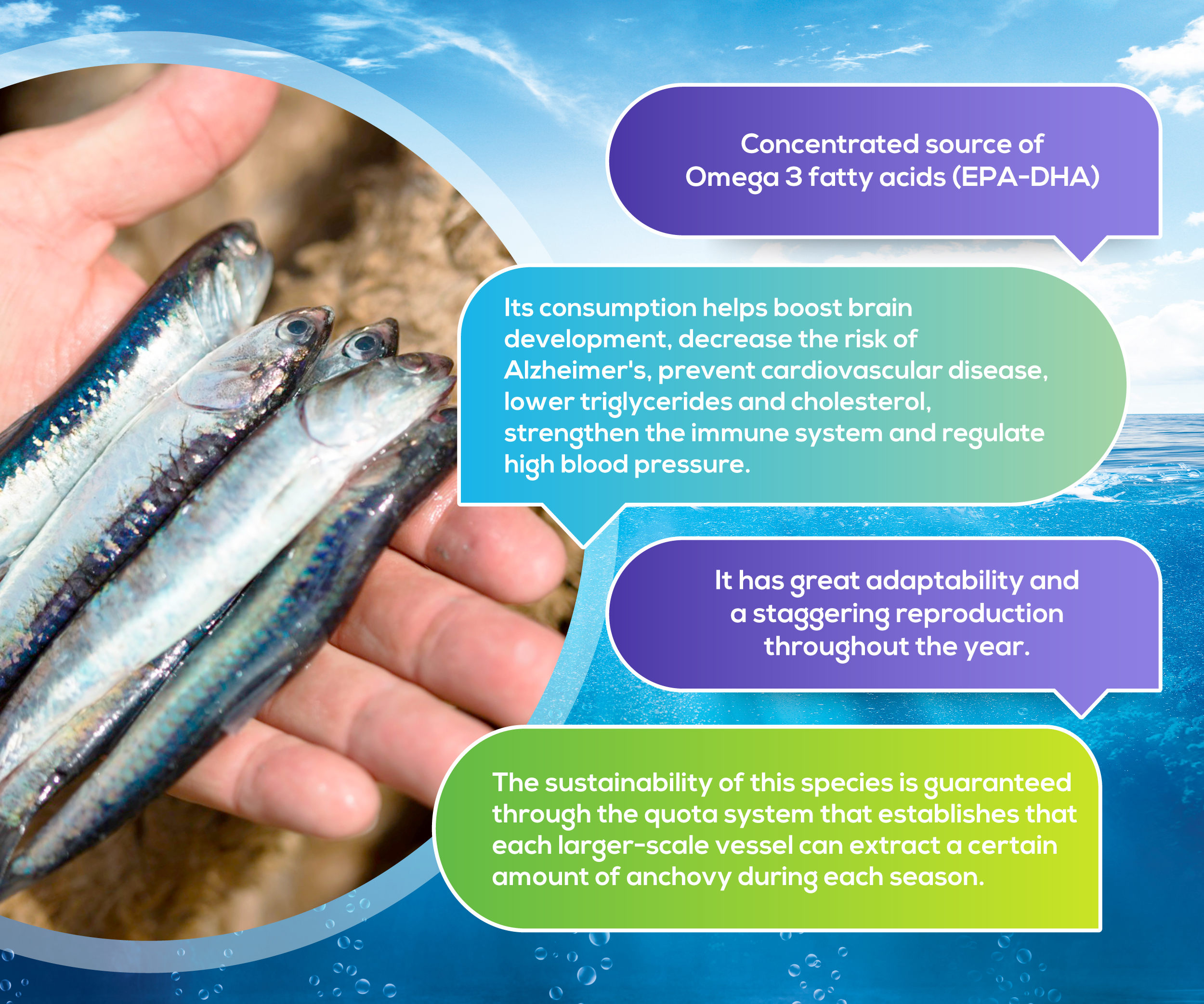| Components |
|---|
| Fat |
| Protein |
| Humidity |
| Ash |
| Salt |
| *Calories per-100 gr |
Our Resource: The Peruvian Anchovy
 The sea that bathes the more than 3,000 km of coastline that Peru has, is one of the richest and most productive in the world. The convergence of water masses of different temperatures, such as the cold Humboldt current and the warm Equatorial Countercurrent, added to the winds that blow along the Peruvian coast, give rise to a natural recirculation or outcrop system, that carry to the surface of the sea waters very rich in nutrients and mineral salts.
The sea that bathes the more than 3,000 km of coastline that Peru has, is one of the richest and most productive in the world. The convergence of water masses of different temperatures, such as the cold Humboldt current and the warm Equatorial Countercurrent, added to the winds that blow along the Peruvian coast, give rise to a natural recirculation or outcrop system, that carry to the surface of the sea waters very rich in nutrients and mineral salts.
Thus, Peru has the largest fishery on the planet based on a single species: the Peruvian Anchovy(Engraulis Ringens) which the people of Caral, the oldest civilization in America, already fished for more than 5,000 years ago.
Anchovy is a resource that is very rich in micronutrients that are not usually found in basic foods. It has an important content of lysine and other essential amino acids in addition to minerals, such as potassium, iron, phosphorus and calcium, which far exceed those of chicken or beef. It also concentrates a remarkable presence of vitamin A and D in its fat component.
As it has been demonstrated in countless scientific studies, the EPA and DHA fatty acids contained in Omega3 from peruvian anchovy, have proven effects in the prevention of various coronary diseases, are of high importance for the formation of the central nervous system and the retina of the eye, noticeably strengthen the immune system and have anti-inflammatory and anti-infective effects.
Peruvian anchovy is the basis of the international Omega 3 industry for direct human consumption. The fishmeal and fish oil produced from this species are recognized as the best ingredient to produce balanced food for fish, shrimp, pigs and poultry, because of their great digestibility, nutritional benefits and physical properties. Thus, the Peruvian anchovy contributes to directly and indirectly feeding billions of people.
To guarantee the sustainability of this species, Peru implemented, in 2009, an individual fishing quota system that establishes that each larger-scale vessel can extract a certain amount of anchovy during each season. Since then, statistically, the Government has set the industrial anchovy quota below 35% of its total biomass to guarantee its sustainability. The remaining 65% is reserved for the reproduction of the species and the feeding of birds, wolves and other fish.
The best proof of the proper technical and scientific management of the anchovy is that in the last 20 years, the biomass (population) of this species has remained stable in a range of 6 to 12 million MT (summer cruising).
What is Omega-3 and what are its health benefits?
Omega 3 is mainly composed of EPA and DHA, essential fatty acids for the proper functioning of our body.
Its consumption helps boost brain development, decrease the risk of Alzheimer's, prevent cardiovascular disease, lower triglycerides and cholesterol, strengthen the immune system, regulate high blood pressure, among many other benefits corroborated in various studies.
Nutritional Value
| Average % |
|---|
| 4 - 7 % |
| 16 - 19 % |
| 72 - 77 % |
| 3.5 - 3.9 % |
| 0.8 - 1.2 % |
| 185 |






